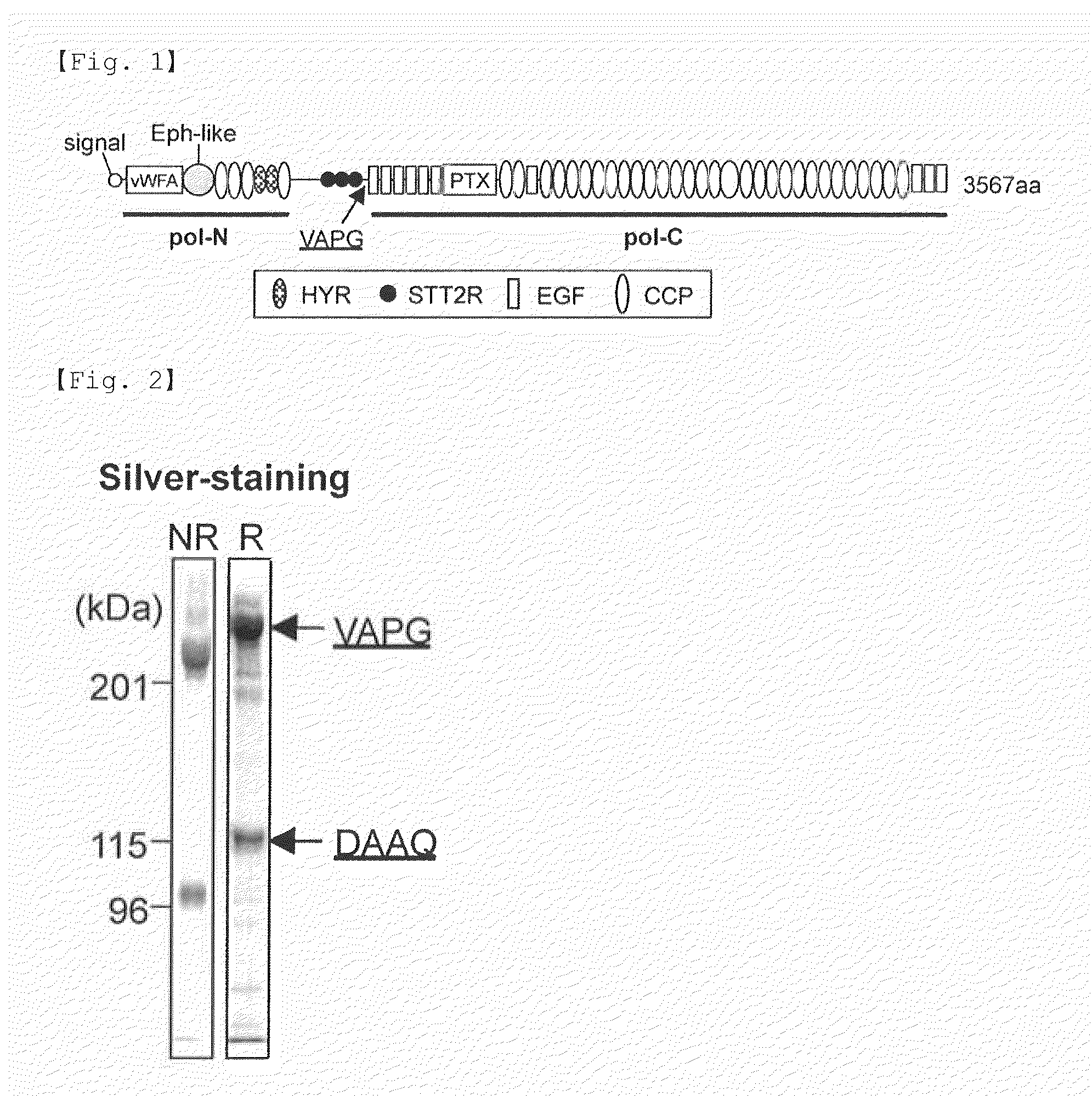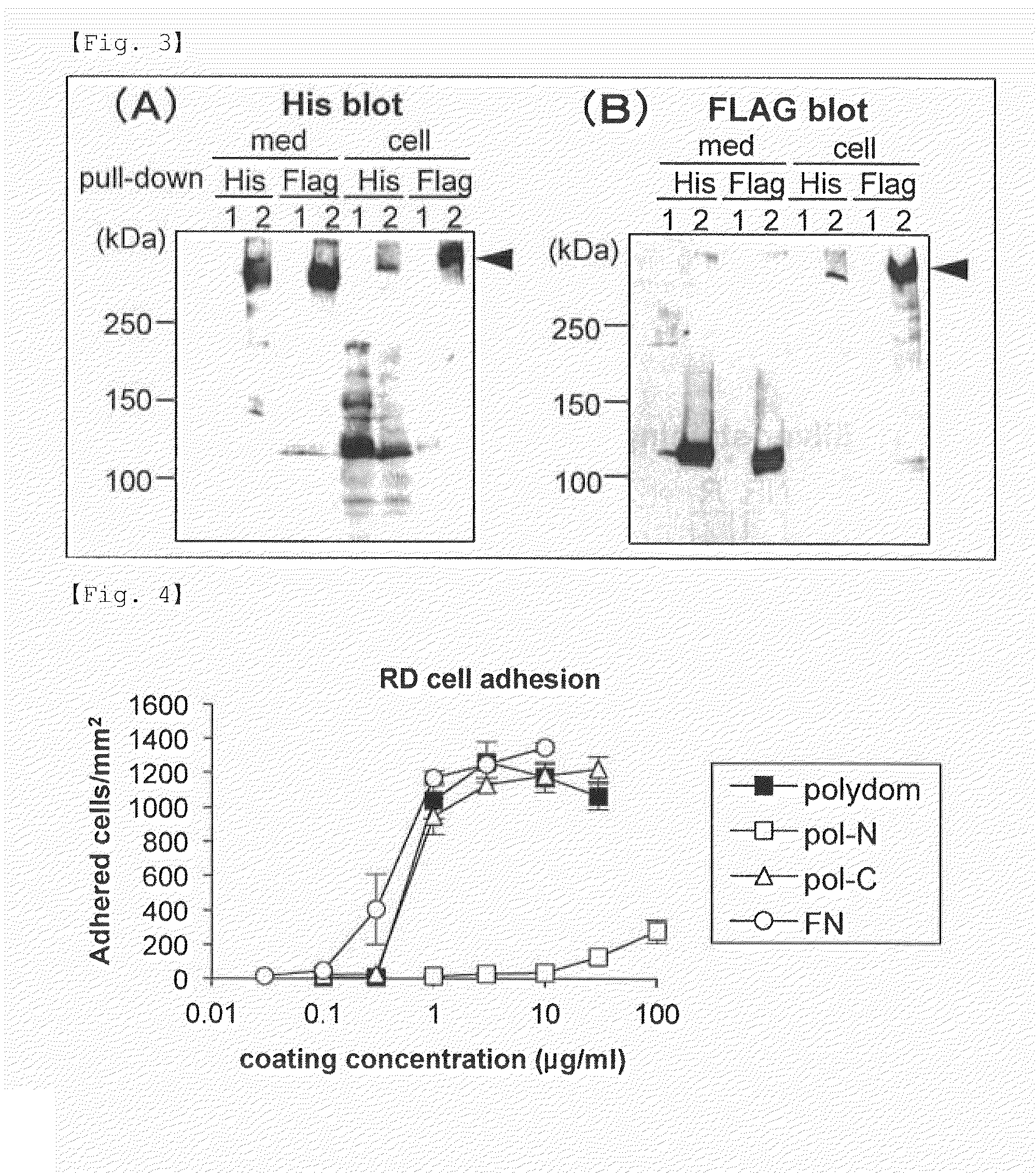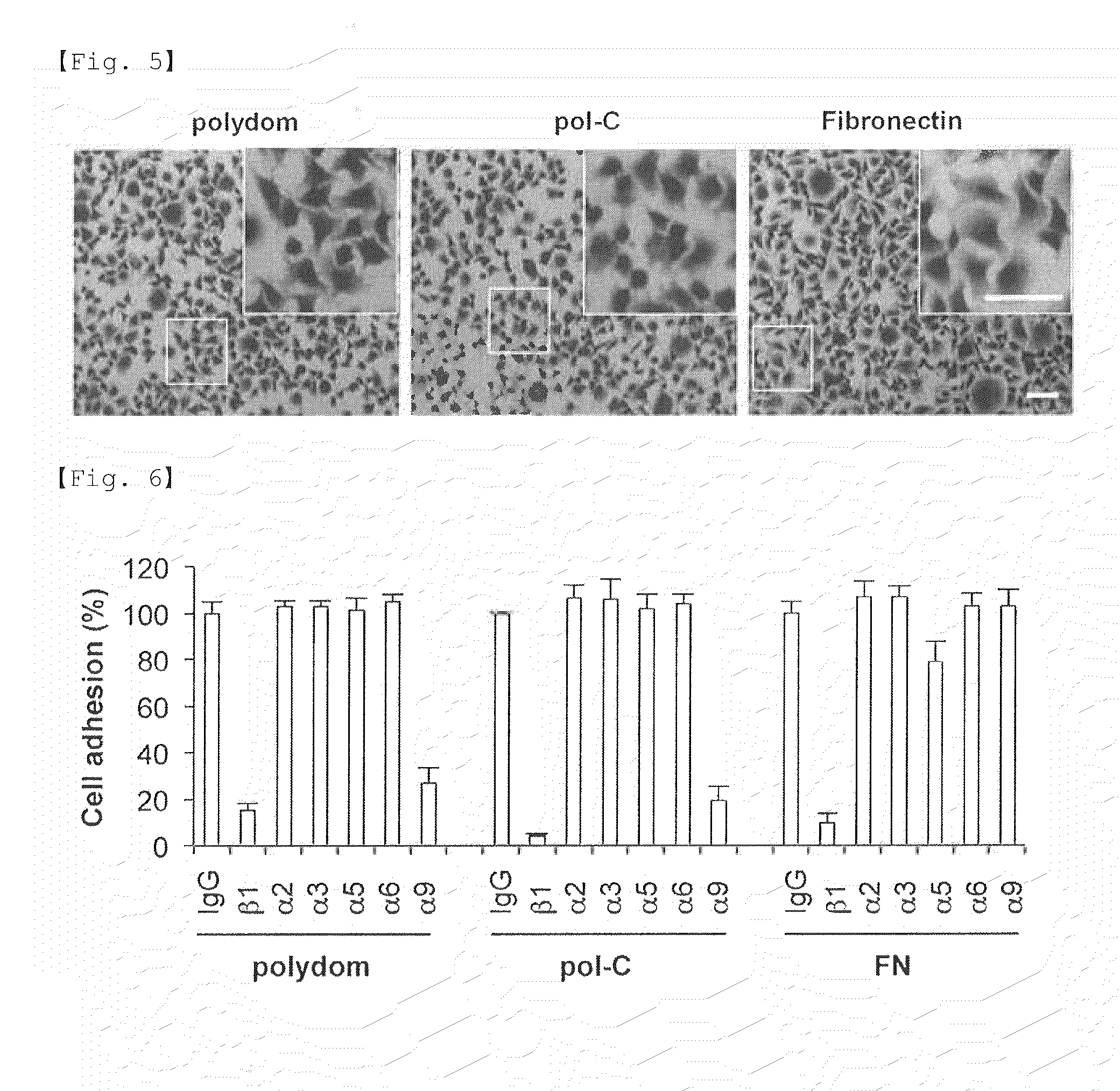NOVEL INTEGRIN alpha9 beta1 LIGAND AND USES THEREOF
a technology of integrin and alpha9, which is applied in the field of new integrin alpha9 beta1 ligands, can solve the problems of still remaining uncertain whether they function as physiological ligands, and achieve the effect of higher binding affinity
- Summary
- Abstract
- Description
- Claims
- Application Information
AI Technical Summary
Benefits of technology
Problems solved by technology
Method used
Image
Examples
example 1
Identification of Novel Ligand for Integrin α9β1
Experimental Procedures
[0092](1) cDNA Cloning and Construction of Expression Vectors
[0093]A DNA segment encoding a FLAG tag and a DMA segment encoding a 6×His tag were PCR-amplified. These amplified segments were separately inserted into the NotI / ApaI site of the pcDNA3.1 (+) vector or the pSecTag2B vector (these vectors are available from Invitrogen), yielding pcDNA-FLAG, pSec-FLAG and pSec-His. For construction of expression vectors for N-terminal FLAG-tagged proteins, the DNA segment encoding the FLAG sequence was inserted into the HindIII / BamHI site of the pSec-His vector to yield pSec-NFLAG-His. A cDNA encoding mouse SVEP1 (hereinafter referred to as “polydom” in Examples) was obtained by RT-PCR using RNA extracted from mouse embryos at embryonic day 7 (Clontech) and subcloned into pBluescript KS(+) (Stratagene). After verification of the nucleotide sequence, an error-free cDNA fragment was inserted into pcDNA-FLAG, pSec-FLAG, pS...
example 2
Interaction of Novel Ligand for Integrin α9β1 with Hematopoietic Stem Cells
[0135]Bone marrow cells were flushed out from the femurs and tibias of three mice of 6 to 7 weeks of age (C57BL / 6J) and dissociated with a 22G needle. The cells were reacted with a biotin-labeled anti-lineage antibody for 30 minutes and subsequently with an anti-blotin antibody-conjugated magnetic beads, and lineage-positive cells were removed by automated magnetic cell sorter autoMACS (Miltenyi Biotec). After staining with PE-CD3, PE-Mac1, PE-Gr1, PE-Ter119, PE-B220, FTTC-Sca1 and APC-c-Kit, a lineage(−) Sca1(+) c-Kit (high) cell fraction was sorted out using FACSAria and used for the experiments described below.
(1) Examination of Proliferation and Differentiation of Hematopoietic Stem Cells
[0136]The above-prepared cells were plated on a 48-well plate coated with a recombinant polydom protein or fibronectin. The same type of plate without coating was used as a control. The medium used was RPMI containing 10%...
example 3
Interaction of Novel Ligand for Integrin α9β1 with Cardiac Stem Cells
(1) Separation of Cardiac Stem Cells
[0142]Tissue stem cells are known to generally have a very prolonged, cell cycle and thus allow labeling compounds incorporated into DNA and the cell interior to remain stable for a long period of time without decay along with cell division, This nature can be advantageously used to identify and separate tissue stem cells by short-term labeling or cells with a nucleotide analog such as bromodeoxyuridine (BrdU) or a fusion protein of green fluorescent protein (hereinafter referred to as “GFP”) and a nucleoprotein, histone, followed by selection of cells retaining the label for a long period of time (label-retaining cells). In this experiment, with the use of a tetracycline-inducible expression system in combination with the ROSA26 promoter, a fusion protein of GFP and histone H2B (H2B-GFP) was expressed in the heart of a mouse for 2 weeks starting 1 week before birth, and 6 weeks ...
PUM
| Property | Measurement | Unit |
|---|---|---|
| pH | aaaaa | aaaaa |
| pH | aaaaa | aaaaa |
| pH | aaaaa | aaaaa |
Abstract
Description
Claims
Application Information
 Login to View More
Login to View More - R&D
- Intellectual Property
- Life Sciences
- Materials
- Tech Scout
- Unparalleled Data Quality
- Higher Quality Content
- 60% Fewer Hallucinations
Browse by: Latest US Patents, China's latest patents, Technical Efficacy Thesaurus, Application Domain, Technology Topic, Popular Technical Reports.
© 2025 PatSnap. All rights reserved.Legal|Privacy policy|Modern Slavery Act Transparency Statement|Sitemap|About US| Contact US: help@patsnap.com



